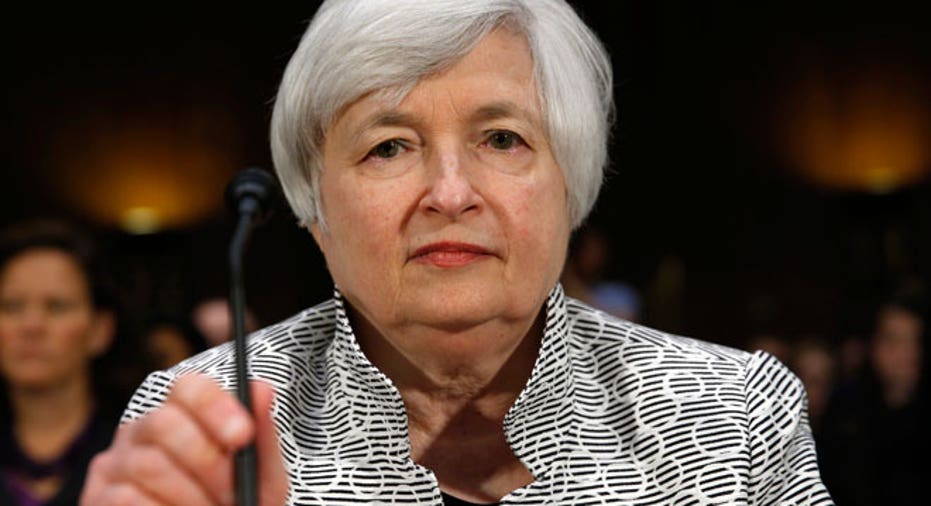The Fed's Maddening Mixed Message

It’s hard to tell these days whether the Federal Reserve will stick to its preferred timetable for raising interest rates or whether central bankers are subtly preparing markets for a delay.
The most recent statement from the policy-setting Federal Open Markets Committee released on Wednesday was a study in cognitive dissonance.
On the one hand, citing in particular strengthening U.S. labor markets, the Fed said economic growth in the U.S. is expanding at a “solid pace,” a decidedly more upbeat description than the “moderate pace” language the Fed had used for months.
“Labor market conditions have improved further, with strong job gains and a lower unemployment rate. On balance, a range of labor market indicators suggests that underutilization of labor resources continues to diminish,” the Fed’s statement read.
The unemployment rate currently stands at 5.6%, its lowest rate in six years, and the U.S. created more jobs in 2014 – more than 3 million – than in any year since 1999.
Yet, despite this apparent optimism, FOMC members seem reluctant to give any indication they are moving away from their long-held position that they’re in no hurry to raise interest rates. Yesterday’s statement reiterated the Fed’s recently added view that it can “be patient” as it mulls incoming data in an effort to determine the proper timing and trajectory for rate hikes.
Which Is It?
So which is it? If the Fed is now describing U.S. growth as “solid” and loudly touting the strength of labor markets, shouldn’t central bankers be anxious to return U.S. monetary policy to normal, one devoid of all the stimulus initiated in the wake of the 2008 financial crisis?
Influential members of the FOMC, including Fed Chair Janet Yellen, have suggested as much in public statements made in recent months. A return to "normalization" has garnered a lot of attention in particular since the Fed’s bond purchasing program known as quantitative easing ended in October.
But there’s certainly no sign of that message in yesterday’s FOMC statement.
To be sure, the FOMC members are dealing with an array of mixed economic messages. At the same time the U.S. economy seems to be gaining sustained momentum, Europe is struggling mightily again with the dangerous threat of deflation.
In the days leading up to the Fed’s two-day meeting this week, the European Central Bank announced an historic bond-purchasing program of its own in an effort to goose stagnant economies across the 19-member eurozone, and angry Greece citizens elected a far-left government that’s likely to throw out years of austerity measures foisted on Greece by the ECB five years ago during the worst of Europe’s sovereign debt crisis.
Meanwhile, plunging energy prices and a rapidly strengthening dollar are sending ripples throughout the global economies. No one really knows what impact those ripples will have as they make their way through troubled economies in Asia, Russia and the Middle East.
Will all this global turbulence offset the momentum in the U.S. and persuade central bankers to hold off on a rate hike?
If all these recent Fed-speak semantics are dismissed, what we’re left with is essentially the same broad message the Fed has been telegraphing for months. To wit, if the incoming economic data continues to offer evidence that the U.S. economy is ready to stand on its own without Fed stimulus, interest rates will start moving higher in mid-2015.
All Over the Place
Furthermore, in a message that’s perhaps even more important than the likely timing of rate hikes, the Fed has made it abundantly clear that when rates do start moving higher the upward trajectory will be extremely gradual.
Proof that no one really knows when rates will move higher can be culled from the range of opinions and forecasts offered by analysts, experts and assorted gurus from across the monetary policy spectrum – from extreme dove to hardcore hawk.
At one end of the spectrum is the Fed’s own Narayana Kocherlakota, president of the Minnesota Federal Reserve, an avowed dove who has repeatedly urged the Fed not to raise interest rates until well into 2016 when inflation is likely to have inched higher toward the central bank’s 2% target rate.
“Raising the target range for the fed funds rate in 2015 would only further retard the pace of the slow recovery in inflation,” Kocherlakota said in a speech earlier this month.
Meanwhile, a Reuters poll in late 2014 showed most Wall Street banks believe the rate hike will come after the Fed’s June meeting, or about in line with the timing telegraphed by the Fed itself.
But forecasts, predictions and opinions are all over the place, a lack of consensus that’s only been exacerbated as the trajectory of the U.S. economy has diverged from the rest of the world. And the Fed hasn’t done much to clear up the confusion.



















